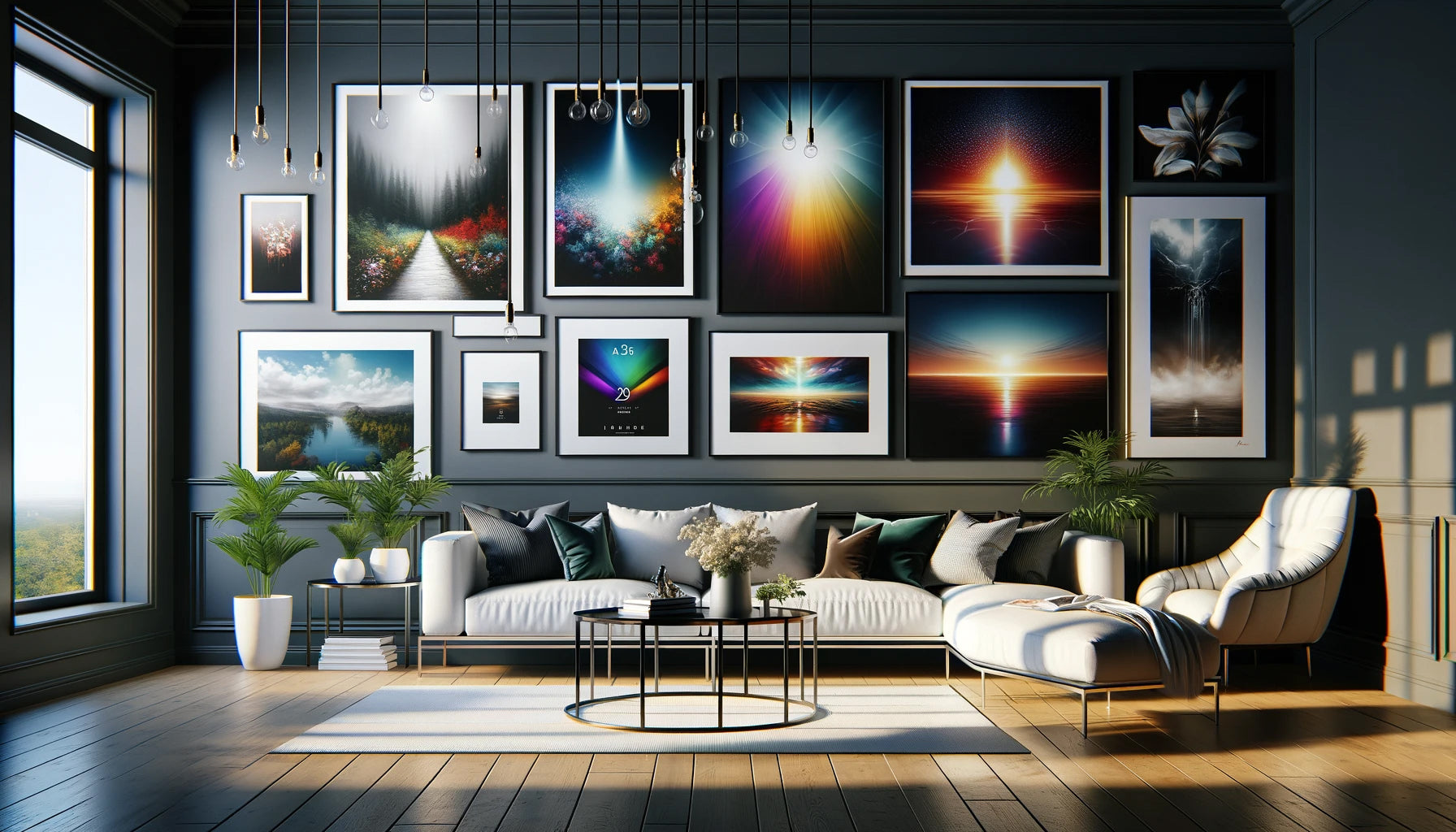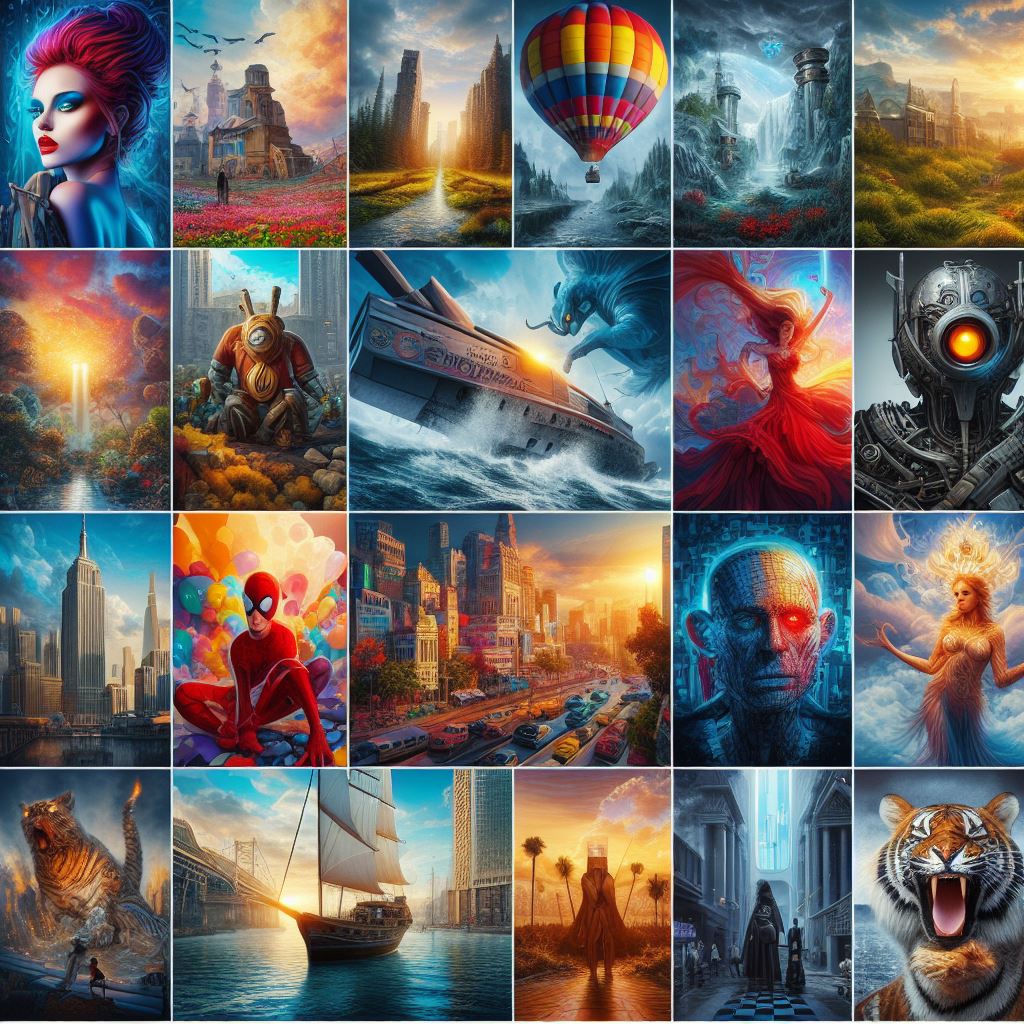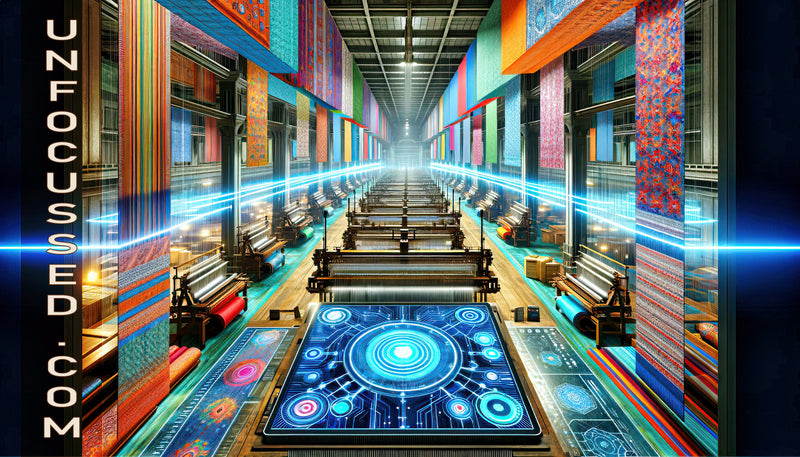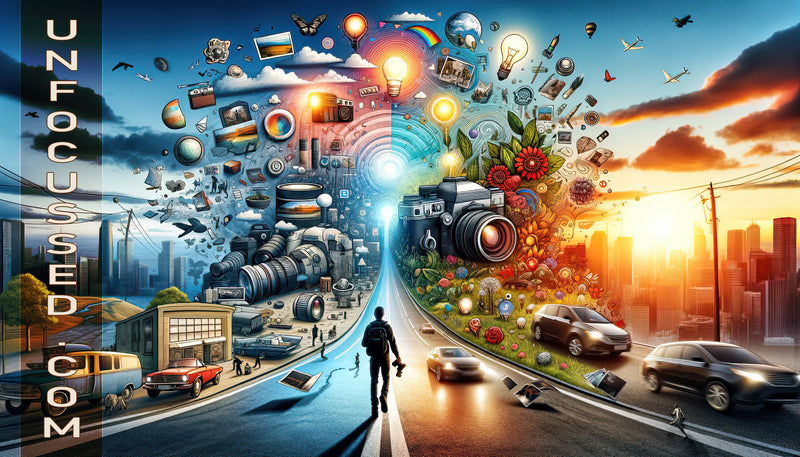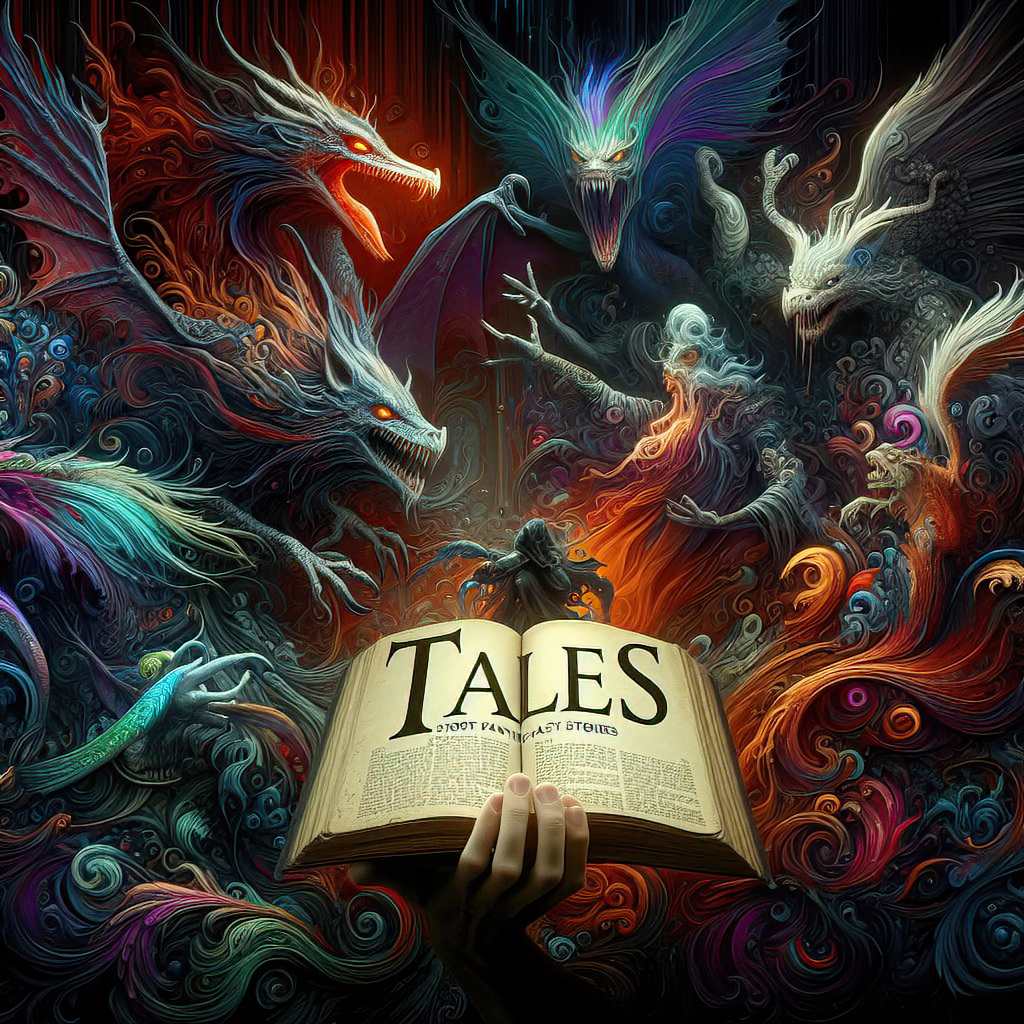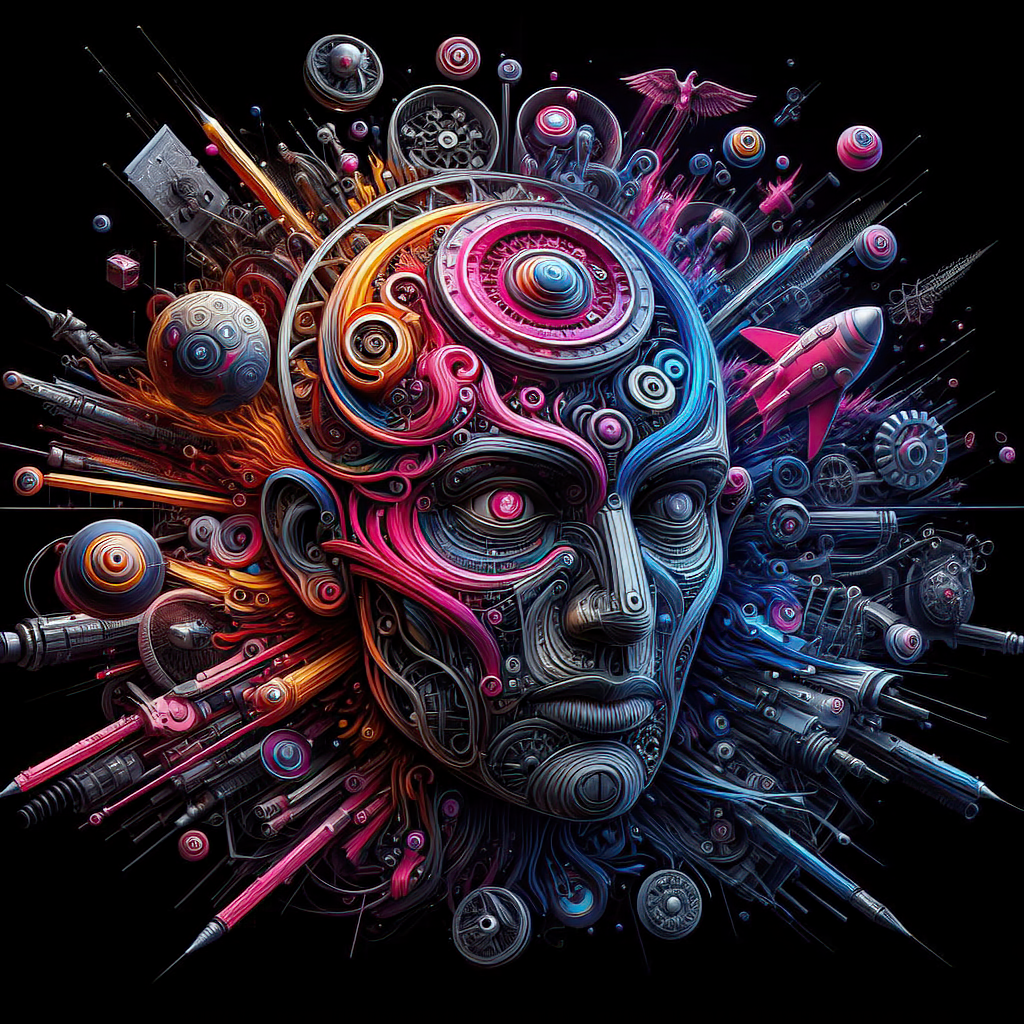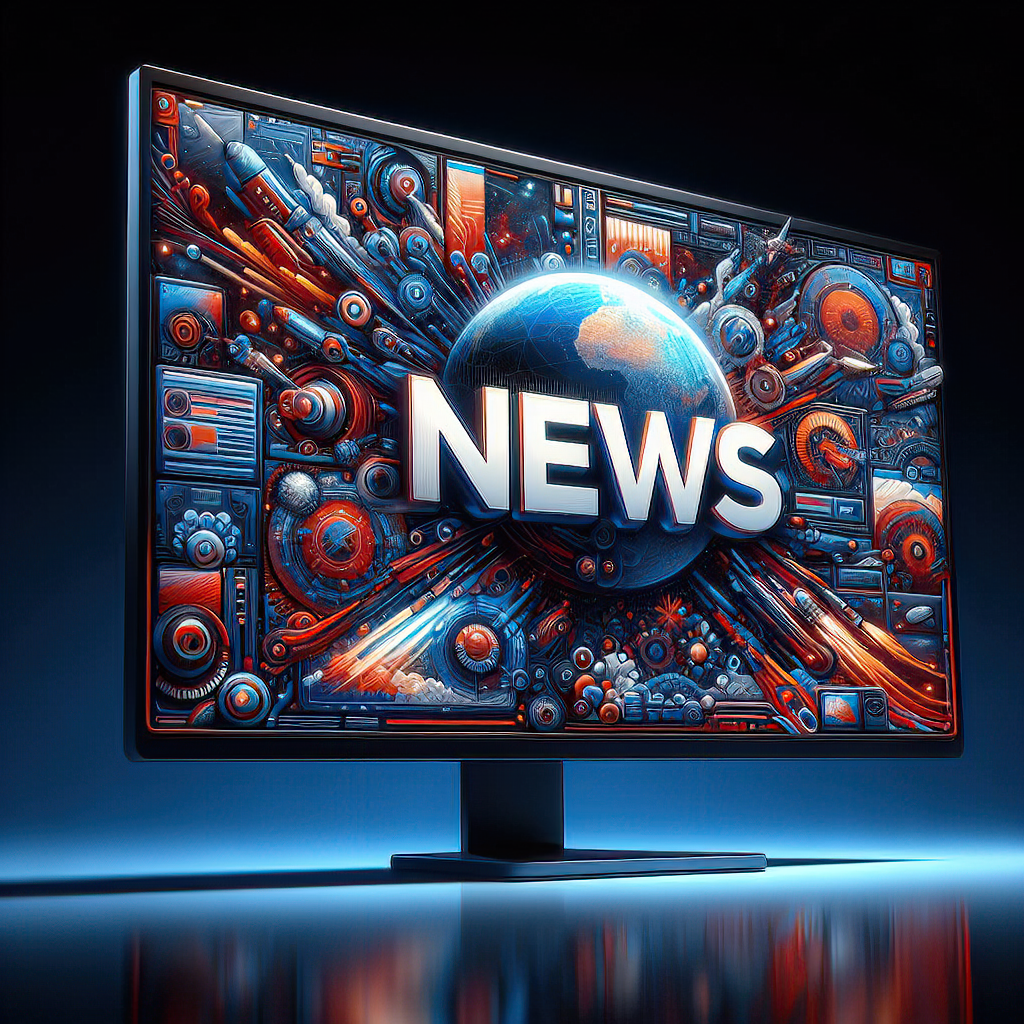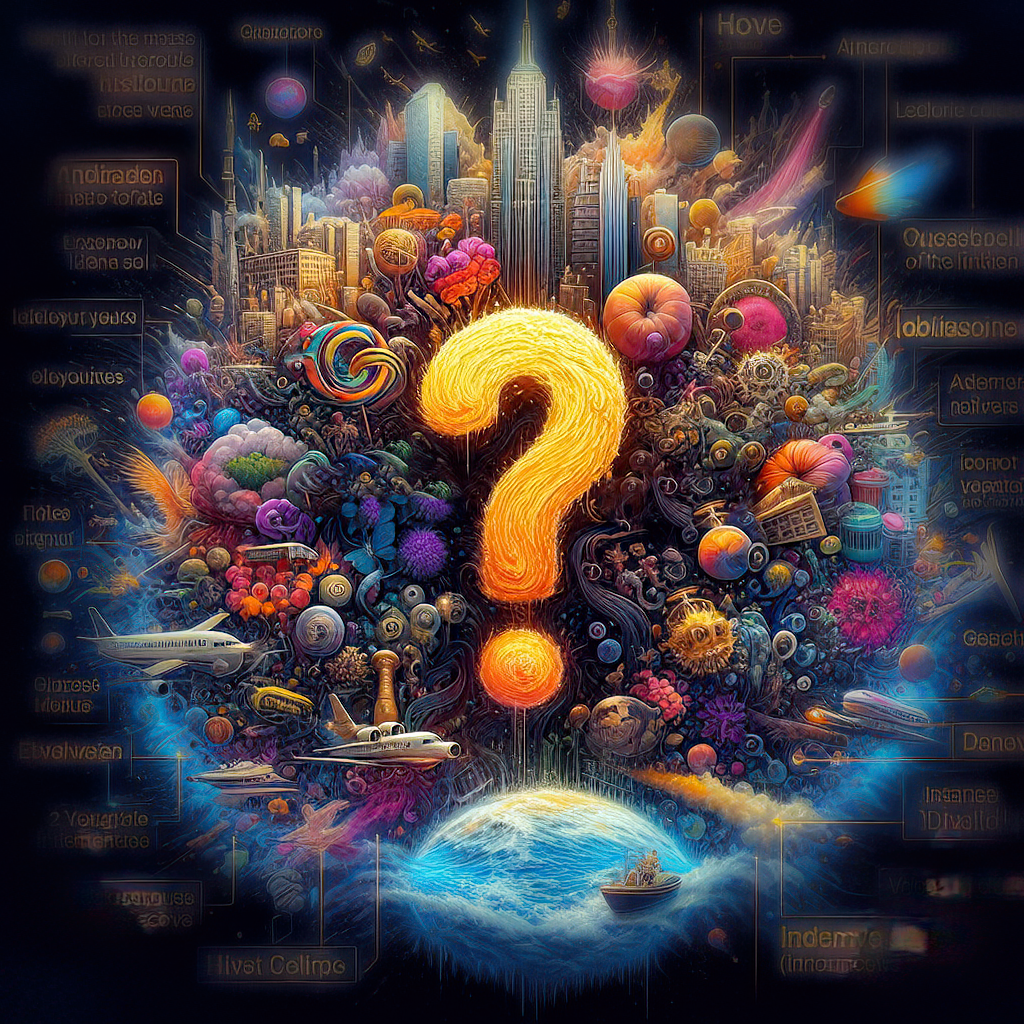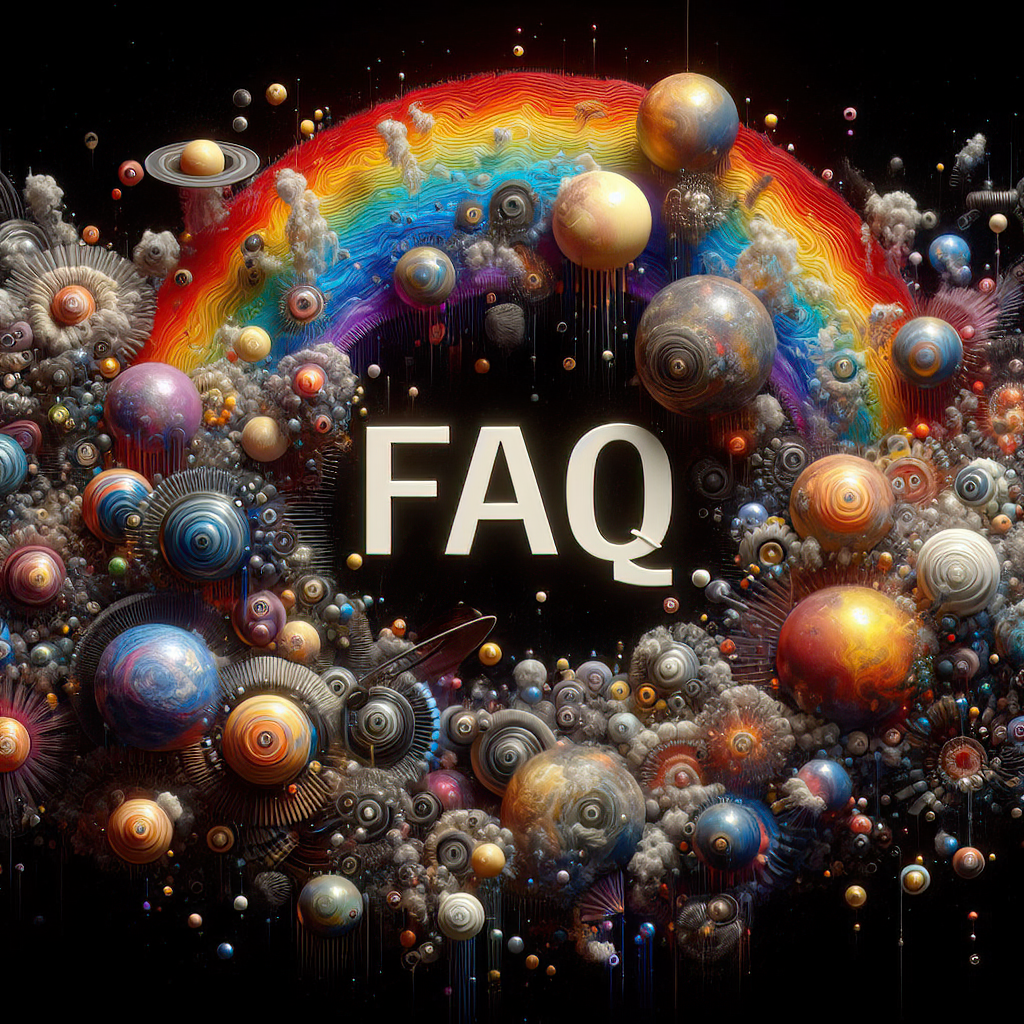
by Bill Tiepelman
The AI Revolution: Transforming Imagery
Discover how artificial intelligence is revolutionizing photography and design, offering new possibilities and reshaping the creative landscape. The dawn of artificial intelligence (AI) has marked a new era in various sectors, from healthcare and finance to entertainment and beyond. Yet, one of the most visually stunning transformations is happening within the realm of imagery—encompassing both photography and design. This revolution is not just about enhancing the quality of pictures or the efficiency of design processes; it's about fundamentally altering how we create, interpret, and interact with images. In this blog post, we will delve into how AI is reshaping the landscape of visual creativity, bringing forth new possibilities that were once deemed the stuff of science fiction. We will explore the evolution of this technology, its profound impact on photography and design, and the new frontiers it opens up for artists and professionals alike. Additionally, we'll address the ethical considerations and challenges that come with this revolutionary shift. Join us as we journey into the future of imagery, guided by the innovative hand of artificial intelligence. The Evolution of AI in Imaging Imaging technology has experienced exponential growth over the past few decades, evolving from simple photographic techniques to complex digital processes. This evolution has been significantly accelerated by the advent of artificial intelligence. Initially, AI in imaging was rudimentary, focused mainly on improving picture quality and automating basic tasks like color correction and object recognition. However, as technology advanced, so did the capabilities of AI, paving the way for more sophisticated applications and transformative changes. The integration of AI into imaging can be traced back to early experiments with neural networks and machine learning algorithms, which laid the groundwork for today’s advanced image processing tools. These early steps were crucial in teaching computers to 'see' and interpret visual data, much like humans do. From enhancing resolution to automating intricate editing processes, AI began to take on more complex roles. Key developments in AI imaging include the advent of deep learning and convolutional neural networks, which revolutionized the way machines understand and manipulate images. These technologies enabled unprecedented accuracy in image recognition, paving the way for features like facial recognition and real-time object detection in photography and video. Another milestone was the development of generative adversarial networks (GANs), which further blurred the lines between reality and AI-generated imagery. GANs allowed for the creation of highly realistic images from scratch, opening new doors for creative expression and commercial applications alike. The journey of AI in imaging is a testament to the relentless pursuit of innovation, marking a transition from mere enhancement tools to integral elements of the creative process. This journey not only reflects technological advancements but also a changing landscape where creativity and AI intersect in exciting and unpredictable ways. Revolutionizing Photography with AI The integration of artificial intelligence into photography has shifted the paradigm from traditional capturing techniques to innovative, AI-enhanced processes. This transformation is not just about making images clearer or more aesthetically pleasing; it's about redefining what's possible with a camera. Enhancements in Photo Editing and Processing One of the most immediate impacts of AI in photography has been in the realm of photo editing. Tools powered by AI algorithms can now automatically enhance photos, correcting issues such as exposure, focus, and color balance in seconds, tasks that once required hours of manual labor. Moreover, AI can remove objects from images, swap backgrounds, or even alter lighting conditions post-capture, empowering photographers to achieve their envisioned results with unprecedented ease. AI in Photography Automation Beyond editing, AI has automated numerous aspects of photography, making it more accessible and efficient. Features like smart scene recognition adjust camera settings in real-time to capture the best possible shot under varying conditions. Meanwhile, facial recognition technology ensures focus and exposure are optimized for human subjects, enhancing the quality of portrait photography. Algorithms and New Capabilities I algorithms have introduced capabilities previously unimaginable in photography. For example, computational photography, a technique heavily reliant on AI, combines multiple images taken at different exposures to create a single high-dynamic-range (HDR) photo. Similarly, AI-driven software can stitch together images to create seamless panoramic shots or employ depth sensing for bokeh effects without the need for professional lenses. Real-World Applications and Examples The real-world applications of AI in photography are vast and growing. In wildlife photography, AI-powered cameras can detect and track animals, ensuring perfect timing for shots without human intervention. In sports and action photography, AI algorithms can predict movement and focus accordingly, capturing crisp images of fast-moving subjects. Additionally, AI is revolutionizing stock photography by generating realistic and customizable images, reducing the need for extensive photoshoots. The revolution of photography by AI is ongoing and expansive. It's not just changing how professionals work but also democratizing photography, allowing novices to produce high-quality images with minimal effort. This shift is fostering a new era of creativity and exploration in photography, where the technical barriers to capturing the perfect shot are continually being eroded by the advancing tide of artificial intelligence. Transforming Design with AI Tools The transformative impact of AI on design is as significant as its influence on photography, if not more. In the realm of graphic design, illustration, and even web design, AI tools are changing the way creators approach their work, from conception to execution. Impact on Graphic Design and Illustration AI has begun to play a crucial role in graphic design and illustration, automating time-consuming tasks and offering new methods for creating complex visuals. For instance, AI-powered design software can now suggest color palettes, generate design elements, and even create entire layouts based on user-defined parameters. This not only speeds up the design process but also helps designers explore new creative avenues without the constraints of traditional tools and techniques. Designers can leverage AI to generate unique patterns, textures, and shapes, pushing the boundaries of conventional aesthetics. Illustrators, too, find value in AI as it aids in transforming basic sketches into detailed artworks, interpreting and enhancing the artist's intent with surprising intuition and accuracy. Examples of AI-driven Design Tools There are several AI-driven design tools that have made waves in the industry. Programs like Adobe Sensei harness AI to streamline workflow processes, from cropping images intelligently to refining vector graphics automatically. Other tools, such as Canva’s Magic Resize, use AI to adapt designs for different platforms and formats effortlessly, a task that previously required manual adjustment and considerable time. Emerging platforms like DALL-E and Artbreeder go further, allowing users to create complex images from textual descriptions or by blending existing visuals, respectively. These tools embody the potential of AI to not only assist in the design process but to inspire new forms of artistic expression. Case Studies Showcasing AI-driven Design Projects Real-world case studies underscore the potential of AI in design. For example, some companies have used AI to develop branding materials, from logos to marketing collateral, with systems that analyze industry trends and consumer preferences to suggest designs that align with current tastes and company identity. In product design, AI algorithms can predict consumer preferences and help designers create more appealing product features and interfaces. The transformation of design through AI tools is empowering professionals and amateurs alike to realize their visions in ways previously unimaginable. By automating routine tasks and offering new creative possibilities, AI is not just changing the landscape of design; it's expanding it, inviting all to explore and innovate beyond traditional boundaries. New Possibilities Unleashed The advent of AI in the realms of photography and design is not merely about streamlining existing processes; it's about opening doors to entirely new possibilities. These advancements are setting the stage for a future where the boundaries of creativity are constantly expanding, enabling artists, designers, and photographers to explore genres and styles that were once out of reach. Exploration of New Genres and Styles AI's ability to learn and adapt is fostering the emergence of new artistic genres and styles. Artists and designers are experimenting with AI-generated art, which can produce unique and unpredictable results, blending elements from various schools and periods of art in innovative ways. This AI-assisted creativity is not only giving birth to new forms of visual expression but is also democratizing art creation, making it more accessible to those without formal training. Expanding the Boundaries of Creativity and Art With AI, the creative process is no longer confined by the limitations of human skill or imagination. For instance, AI can generate high-resolution images from rough sketches, fill in details in incomplete compositions, or even create complex 3D models from simple descriptions. This enables creators to bring their wildest fantasies to life with precision and fidelity previously unimaginable. Future Prospects and Ongoing Experiments The potential for AI in the creative domain is vast and still largely untapped. Ongoing experiments with AI in art and design continue to yield surprising and thought-provoking results. Researchers and innovators are exploring ways to combine AI with other technologies, like virtual reality and augmented reality, to create immersive and interactive art experiences. The future promises even more sophisticated AI tools that will further remove technical barriers, allowing creators to focus on the essence of their artistic vision. The impact of AI on imagery is a testament to the dawn of a new era in creative expression. As we continue to explore these new possibilities, we are not just witnessing a transformation in how art is made; we are participating in the redefinition of what it means to be creative. Ethical Considerations and Challenges As the AI revolution continues to transform imagery in photography and design, it brings with it a host of ethical considerations and challenges that must be addressed. The power of AI to create and manipulate images introduces questions about authenticity, originality, and the moral implications of these technological advancements. Authenticity and Originality One of the primary concerns surrounding AI-generated imagery is the issue of authenticity. As AI becomes more adept at creating realistic images, distinguishing between what is real and what is AI-generated becomes increasingly difficult. This blurring of lines can have significant implications, especially in fields like journalism or historical documentation, where authenticity is paramount. Furthermore, the ease with which AI can produce original works raises questions about the value and definition of human creativity and artistic originality. Intellectual Property Rights and Copyright Issues The proliferation of AI-generated images also presents challenges in terms of intellectual property rights and copyright. Determining the ownership of an AI-created piece can be complex, especially when the AI draws inspiration from existing works. This situation necessitates a reevaluation of copyright laws to accommodate the new dynamics introduced by AI in the creative process. The legal framework must evolve to protect the rights of creators while fostering innovation and respecting the contributions of AI. Ethical Use of AI in Imagery and Societal Impacts The ethical use of AI in imagery extends beyond legal considerations to encompass societal impacts. There are concerns about the potential for AI-generated images to spread misinformation, manipulate public opinion, or perpetuate biases. Ensuring that AI is used responsibly and ethically requires transparency about the use of AI-generated content and ongoing efforts to mitigate biases within AI systems. Furthermore, as AI tools become more accessible, there's a growing need to educate users about ethical practices in AI-generated imagery. Artists, designers, and photographers must navigate these new tools with an understanding of their implications, striving to use AI in a way that respects ethical standards and contributes positively to society. In conclusion, while AI's impact on imagery offers exciting possibilities, it also necessitates a careful consideration of ethical issues. Balancing innovation with integrity will be crucial as we navigate this new landscape, ensuring that the AI revolution in imagery enriches rather than undermines our cultural and moral values. The AI revolution in imagery is undeniably transforming the fields of photography and design, ushering in an era of unprecedented creativity and innovation. As we have explored, this transformation brings not only new capabilities and opportunities but also significant ethical challenges and considerations. As we move forward, it is essential for creators, consumers, and policymakers to engage with these changes thoughtfully and responsibly. By embracing the potential of AI while being mindful of its implications, we can ensure that the revolution in imagery enhances our world without compromising our values. The journey into the AI-enhanced future of imagery is just beginning. With continued exploration, ethical engagement, and creative collaboration, we can harness the power of AI to open new vistas of artistic expression and cultural understanding. Let us embrace this journey with open minds and responsible hearts, ready to shape a future where technology and creativity converge in harmony.
